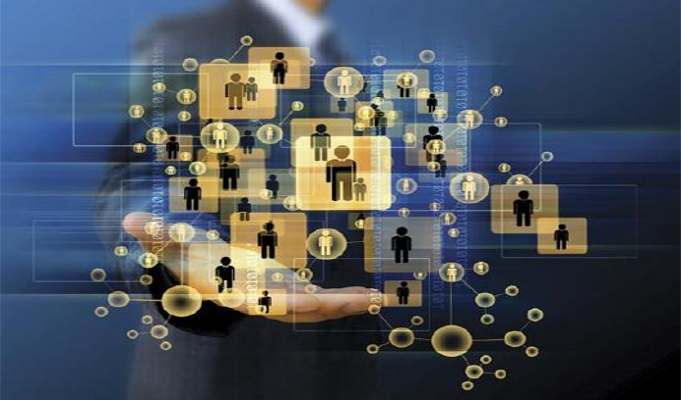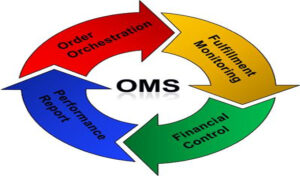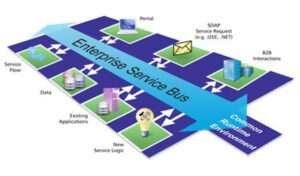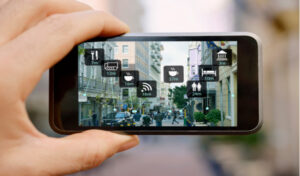Retailers today are challenged with addressing multiple disruptive technologies and the demanding ‘Digital Customer’ who likes to order products and services using more than one touch points at their convenience of location and device. Today, the strong focus is on innovation. Technologies which are focused on improving customer interaction and experience will be on their priority list…
One of the greatest challenges in the retail industry today is the pace of technological change and the ways in which new technologies are fundamentally changing how people communicate, research, collaborate with each other and choose goods and services. This revolution has leveled much of the playing field relative to traditional sources of competitive advantage, and it is redefining what it takes for retailers to win in the marketplace.
Retailers must find new ways to be relevant to tech-savvy consumers, to compete with disruptive rivals, and to embrace new operating and partnering models that may be required in order to grow profitably in the future. They have spent the better part of the last decade on their heels, reacting to profound changes throughout all sectors of the industry. Rapidly advancing technology has reshaped consumer behaviour and expectations, providing an opening for fast-moving, innovative competitors to enter the market.
2016 has marked a turning point for retailers that have made consistent investments in digital strategies for marketing, operations, supply chain and other critical business areas. These investments, coupled with the continuing evolution of technology, will allow retailers to make important strides toward supply chain transformation, more data driven decision making and the ultimate goal of an Omnichannel consumer experience.
As we enter the middle of Q2, the Omnichannel juggernaut shows no sign of slowing down. If anything, it has gathered momentum. Frictionless Shopping is what customers are looking for. They do not want to experience the gaps in the retailer’s processes and systems. Therefore, most Indian retailers are furiously upgr beading their systems totter serve this discerning customer.
While discussing new technologies in the context of retail, we hear of IoT, RFID, Mobile Payments etc. However, there are not many mainstream deployments of these technologies save for a few pilots in developed economies. However, it may be worthwhile looking at what’s really taking off in our part of the world and work them in our technology strategies.
1POINT OF SALE
No discussion on retail technology can exclude the PoS. But it is hardly new technology, isn’t it? The humble PoS is undergoing a metamorphosis – its very paradigm is changing. First of all the form factor is changing from a clunky space consuming machine to sleek handheld devices. The application itself is now acquiring new super powers.
Today retailers use the PoS in more ways than just ringing up a sale e.g helping customers with features of products, inventory lookup, allowing customers to buy from another store in the chain, tracking shipments, accepting returns of online purchases, facilitating in-store pickup for online purchases etc. Some PoS systems come bundled with CRM functionality, loyalty management and customer analytics. Stores are seen as one of the key advantages that physical retailers hold against their online cousins. A customer who has walked in should not be walking out empty handed. PoS in today’s time is a Point of Service. So it makes sense to take a hard look at the pre-eminent application at the store and consider if it merits an upgrade to keep up with the times.
2ORDER MANAGEMENT SYSTEMS (OMS)
As retailers start operating on multiple channels, they feel the need for scalable inventory management, order fulfilment, and orchestration processes. This is exactly what an OMS does. A few years ago retailers could make do with dedicated inventory for the store or the online channel. But changing times have shown us that it is more prudent to leverage the same inventory across channels for faster turns.
The OMS is a bridge between different order capture systems like the store PoS, online, marketplaces, call centre, and mobile app and fulfilment options like home delivery, pickup in store and dropship. The other key features of OMS is order tracking, managing returns and exchanges.
3VISUAL ANALYTICS
Most stores have surveillance cameras of some kind. Apart from keeping people in the store honest, technology now enables retailers to use the footage from these cameras into valuable customer insights e.g. dicing store footfall by gender and age. In addition, heat maps can now show retailers sections in their store or products that evoked the most\ least interest, customer conversion, quality of staff interaction etc.
This technology is fairly easy to implement through cloud deployment and has the potential to really differentiate customer experience at the store.
4ENTERPRISE SERVICE BUS (ESB)
Systems evolve. Purpose built standalone systems evolve into mission critical applications exchanging data with others over time. However, the method of integration is often times not given as much attention. The result is file based data exchanges in clear text or poorly designed APIs. Not only is it slow, prone to breakdowns and the reason for much end user angst, the security threat in terms of external actors siphoning off data or injecting malicious content is also considerable. ESB frameworks help with precisely this problem.
They enable systems to speak with each other in a scalable, consistent and secure manner. With the plethora of systems mushrooming around the retail landscape, an investment in ESB applications should be explored.
5CHATBOTS
While it may be some time before Siri can make you coffee, chat bots are already getting traction in a variety of industries. BoTs could well be the next wave of how people choose to interact with machines and transact. Imagine you wanted to buy a Sound Bar. You would either Google it or go to retailer websites for research. What if you could do the same through Whatsapp or your favourite messaging application? More people today choose to live in messenger apps than on social sites. Therefore it stands to reason that business will eventually happen there.
Chatbots are at their core, services that take input and based on machine learning send back a response. These services (BoTs) could reside in your shopping app, website or call centre IVR. BOTs are still work in progress and results are not great (SIRI will agree, right?) but they are quickly getting much better than they were a year ago. Already some of the new generation CRM applications allow users to interact with them using Chatbot services paving the way for more consistent quality and a cost-efficient way of communicating with customers.
6AUGMENTED REALITY
Pokemon Go has done for augmented reality what Google Glasses could never achieve. Almost overnight AR has gone from fantasy to real. One of the earliest attempts of AR in retail was the much touted but barely deployed Magic Mirror. Maybe trying on garments virtually was not AR’s destiny. It could be increasing footfalls, immersive product experience, discovering deals in store – or getting product information when you point your phone at it. Whatever the outcome, AR is one of the most exciting technologies and the possibilities are virtually (pun intended) limitless.
There are other technologies out there that are gaining traction. Mobile payment is an exciting area. So are IoT, machine learning, and image-based searches. Customers today are spoilt for choice. Those who tried to differentiate on price are licking their wounds. Product differentiation is difficult to achieve. Retailers, therefore have to differentiate on experience. Frictionless shopping and great store experience are means to this end and technology the not so secret sauce for enabling the former. It is easy to get bogged down with a bunch of technology implementations. Identifying technologies that synergise with one’s business priorities, agile implementation and raising the bar for the competition is what will really define success.













